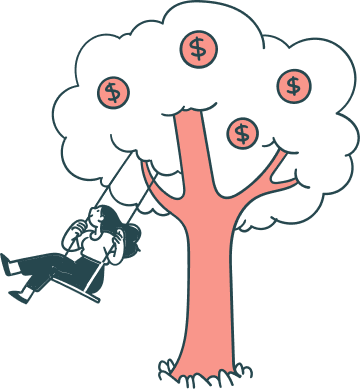You might think that before you dive into a capital campaign, your organization will need wealthy people on your board. As you look around your board table, it may be abundantly clear that your board is not a “fundraising board.” Does that mean that you can’t have a successful campaign? No!
Many organizations don’t have wealthy “fundraising boards.” Boards are often designed intentionally to have a mix of people that reflects the nonprofit’s community and the people they serve.
Your organization’s board might include alumni and family members of people you serve, in addition to community leaders and neighbors. It might include people with program expertise. It may also include a few people who have the resources to make significant gifts. But overall, your board is more likely to reflect the make-up of your organization than it is to be a powerhouse board of the wealthiest people in your community.
For most organizations, that kind of representative “working board” is appropriate.
But what happens when your organization needs a new building, for example, and you must raise $15 million through a capital campaign? Then, your wonderful board doesn’t look like it’s the “right” board. While your board may have one or two people who can give large gifts, most of the members are modest donors who give generously within their means but whose collective giving is not likely to amount to more than 20% of the campaign goal. In fact, recent research by Capital Campaign Pro found that on average, only 14% of capital campaign funding comes from board giving.
No matter your board’s particular giving capacity, the truth is that you can still have a successful capital campaign! Let’s explore how embracing ad hoc campaign committees and allowing your board to thrive in its governing duties can help you cross the campaign finish line.

The Power of Ad Hoc Campaign Committees
In a recent successful campaign, the organization was tickled pink when board giving reached $1 million—less than 10% of the campaign goal! That amount represented a stretch gift from every single board member.
But, of course, that board wasn’t constituted to be the driving force for raising most of the campaign funds. That was the task of the ad hoc campaign committees!
Most capital campaigns rely on a succession of committees to support the work of the campaign. Campaign planning and campaign steering committees are usually created to do the heavy lifting for the campaign that a “working board” can’t do.
These committees are intentionally designed to include people in the community who have the financial capacity and community credibility to help the campaign move forward successfully. They are opportunities to involve philanthropic leaders in the campaign even though they don’t serve on the board.
While those committees are ad hoc groups with no official governance responsibility, they can make campaign recommendations to the board. Committees of that sort include a small group of board members among other community members who bring philanthropic power to the campaign.
Philanthropic leaders are often not inclined to serve on the boards of community organizations that require long-term commitments. However, those leaders may be willing to serve on campaign committees that require shorter-term engagements and through which they can help a worthy organization conduct a successful campaign.
Add a campaign leadership team (consisting of an honorary chair and campaign chair(s)) to the mix, and even an organization that does not have a fundraising board will be well-set to have a very successful campaign.
Roles of the Governing Board
Even though the work of the campaign will be conducted by volunteers who serve on campaign committees, the work of the board is still vitally important.
In its governance role, the board oversees and approves the strategic plan that usually leads to the campaign. The board determines whether the organization will conduct a feasibility study, and if one is done, the board reviews and accepts the resulting report and recommendations.
But once the board votes to move forward with the campaign, the actual work of the campaign shifts to the campaign planning and steering committees, supported by staff.
Every board member will be asked to make a personally significant gift to the campaign, but the overall success of the campaign will depend on the philanthropic leaders recruited for the campaign committees.
So, don’t think that just because your board isn’t a “fundraising board” you won’t be able to conduct a successful campaign. Your campaign may provide a wonderful opportunity to reinforce the important governing role your board plays and strengthen relationships with some of the philanthropic leaders of your community through creating ad hoc campaign committees.



